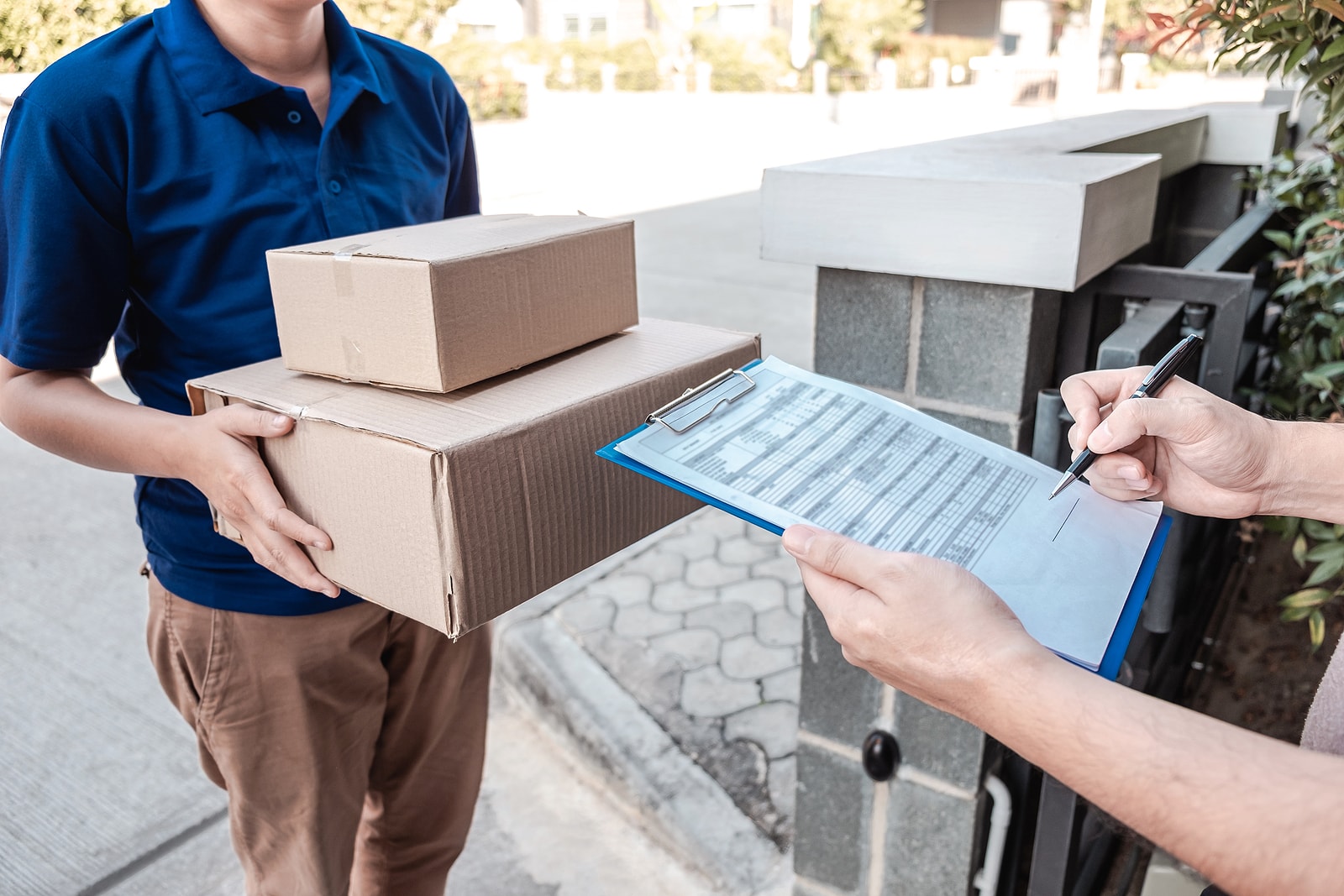Packages heading your way in a condominum
I am writing about one of my favorite subjects…. On-line shopping. I have been an internet shopper for decades well before it was common place. Although I also like supporting local businesses, I enjoying shopping at my leisure no matter what time of day, having a plethora of options to choose from, and then to have the parcel delivered to my door step.
However, major cities are dealing with the growing number of deliveries as a leading concern. Many cities and condominium complexes are expecting to be overwhelmed.
We love the convenience of online shopping and to your door deliveries. Ordering online and having things delivered to us at home or work, is particularly valuable to those who have difficulty getting to retail outlets and have time constraints. Buying online is ‘the’ way of buying goods and services for which our infrastructure was never designed. This means increased truck traffic, congestion and air pollution caused by the way we choose to make purchases.
Trying to keep up with the increasing number of packages arriving at multi-family buildings is becoming a complex matter. On-site concierges, struggling to perform a function not planned for, spend an inordinate amount of time receiving, storing and retrieving parcels with limited storage space and concerns over losing parcels and theft; in the process, it is conceivable that they trade off doing other jobs as part of their scope.
Once that order has been placed online many things happen in just a few days for the parcel to appear in your building or suite.
In New York City alone, more than 1.5 million packages are delivered daily. The cost of this shows up in the gridlock, roadway safety and pollution. There is not enough parking spaces and loading zones for all the delivery trucks forcing vehicles to double-park on streets causing blockages to move traffic. In 2018, UPS and FedEx combined received over 471,000 parking violations; a 34 percent increase from 2013. Highway driving speeds have slowed from 48 km per hour to 37 km per hour on the George Washington Bridge which is considered the most congested interchange in the USA, during this period.
Logistic centers, traditionally located in the suburbs, are now being built closer to the core in residential neighborhoods to facilitate the changing demand relating to parcel deliveries.
In today’s market especially with COVID-19, more deliveries are made to households than businesses since more and more people of working from home. Residential neighborhoods deal with trucks blocking sidewalks, driveways and crosswalks.
Things are expected to get worse as the trend is only moving in one direction – more online deliveries. Prior to COVID-19, retail transactions made online are only 10 percent of all retail transactions. With Amazon moving to one-day delivery promises, their volume is expected to grow in a huge way. More are ordering perishables which increases the delivery demands and requirements.
How Cities Are Coping
Cities are rethinking how the existing infrastructure can be better utilized to facilitate increased package deliveries. These include extended delivery hours into the evenings and week-ends. During off hours, parcels are typically delivered from a larger warehouse to a smaller sub-warehouse, a facility closer to the final destination. In Paris, electric vans and bicycles are used for deliveries. Convenience stores, flower shops and postal box locations serve as pickup locations. In Hamburg, containers with packages are delivered to a drop-off location for delivery by electric tricycle to residential homes. New York City has about 500 companies, including grocery stores and pharmacies, delivering packages between during the evenings an even overnight when streets are quieter and the ability to move is more practical. Curbside parking has been turned into temporary loading zones in an effort to reduce double-parking causing congestion.
The Last Mile of a Delivery
The last mile of any delivery is typically the hardest and most expensive, delivery service providers are seeking more efficient solutions with the current infrastructure.
Amazon is testing drones for deliveries of small packages in less urban areas and electric delivery vans. Electric cargo bikes are being tested in Montreal and Vancouver for deliveries small weight deliveries. These shorter-range delivery solutions require local consolidation hubs where larger trucks can transfer packages to smaller vehicles. In Montreal, a former bus depot has been turned into a local consolidation hub used by five courier companies.
Deliveries to Condominium Buildings
The cost of managing package deliveries is of concern to condo boards.
Most buildings are not designed to accommodate resident deliveries other than envelopes and the occasional package. Today buildings are inundated with packages, some receiving hundreds each day with volumes tripling as the holiday season nears. Packages spill out from behind desks and secure rooms making them accessible to anyone passing by, making these a mark for theft. Each package must be registered, stored, and the resident is to be informed of its arrival. Packages take up valuable space until someone arrives to pick them up. Concierge and on-site security personnel spends a considerable part of the day dealing with packages which may compromise other duties. And, there are additional complications for buildings that do not have on-site staff to accept deliveries.
There is a high cost for receiving and managing package deliveries with on-site staff. The financial cost can be more than $20,000 per building per year factoring in the time, space requirements and process for parcel handling. Condo management software and community platforms incorporate technologies that assist this growing volume of deliveries to streamline the process.
On the other hand, some condominium corporations especially ones with no on-site staff are taking a different approach. These alternatives include setting up smart parcel lockers which can be easy to use self-serve compartment style machines that allow for the automated deposit and pickup of parcels without involving a person to accept delivery. These depots use a key or an electronic system to access and provide digital package tracking systems to automate these critical processes. Others buildings refuse deliveries or require parcels be delivered to a resident’s door. If there is no answer, parcel carriers may resort to leaving a notice requiring that residents call to arrange delivery or pick-up from a sub station location however these notice stickers frequently fall off or disappear.
When developing systems to manage parcel delivery, there are many considerations including tracking, storage, waivers, notifications, identifications and signatures, records and an audit process.
The volume of package deliveries is expected to continue growing! And as the holiday season approaches, condominium boards and managers should plan for the influx of parcel deliveries by creating systems and processes. People love shopping online - no crowds or queues, it’s convenient, you can shop further afield, and you can browse to find what you want.




